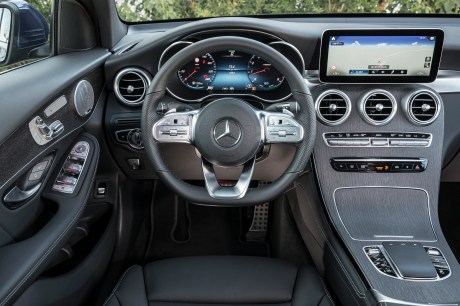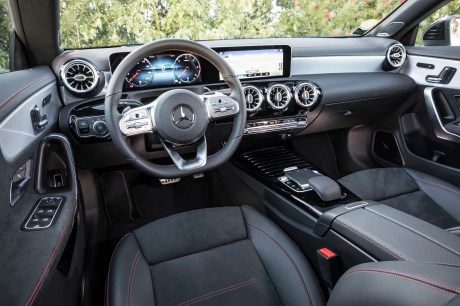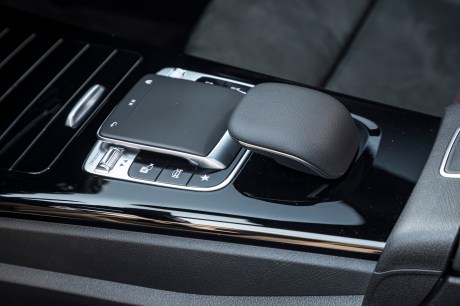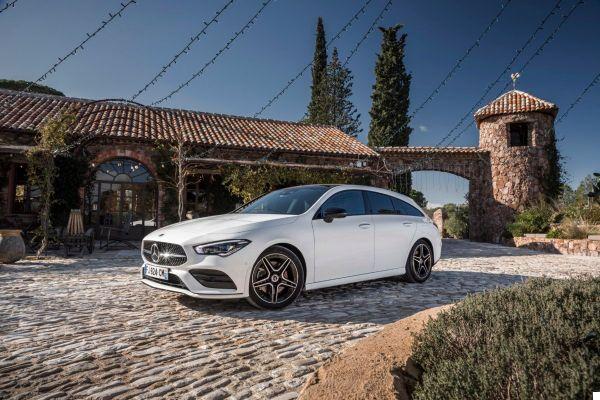Two ways to use it
The MBUX system is presented via a digital double screen that forms a single block, at least on the most recent Mercedes. On the GLC, for example, the system will be represented by the central touch screen and by a digital instrument cluster, two screens well split in two, quite simply because the GLC is in its restyling and not in its new generation. .
YouTube linkSubscribe to
Mercedes will integrate the digital dual panel on the next generation, the changes being far too expensive for a simple restyling. Therefore, we turned to the new CLA Shooting Brake which, as the photos testify, has a dual screen. Below, on the left, the interface of the CLA and on the right that of the GLC.


The central one is tactile, but can also be controlled via a pad located at the level of the central console with, in addition to that, some shortcuts materialized by physical commands. Mercedes offers this possibility of pad and physical controls quite simply so as not to “upset” the habits of historical customers. The ergonomics immediately seem quite complicated, but in fact, once the use of the touch screen is well integrated, customers will surely forget the physical controls.


Regarding the instrumentation screen, it obviously replaces the classic needle counters and can not be controlled only via physical controls located on the steering wheel. You will have on hand two small pads that will fall under your thumbs when your hands are located at 9:15 am on the steering wheel.


There are several types of display that you can adjust as you wish. If the speed always remains displayed, just like the fuel gauge or the gear engaged, regardless of your selected mode, it will be possible to have, for example, the GPS in full screen or in smaller, with the two meters around. It's obvious, it's pretty well done and above all, it's rare enough to underline it, navigation is accurate and seemed up to date in our testing. Too often, even on supposedly new test cars, we are entitled to a mapping that is far from up to date.


An on-board GPS finally up to standard?
The GPS also has a system to manage your route according to the traffic on certain axes. During our test around Toulon, we only encountered one small traffic difficulty around a roundabout, a trifle compared to what we can find in your city, but this was however reported. Mercedes uses HERE as data source for its navigation system. It allows, among other things, to suggest “interesting places” (designated as “Points of Interest” by Mercedes), such as museums or supermarkets, but also to navigate to the next gas station. This last point can be activated automatically when the car detects that your tank is soon empty.

The navigation system offered by Mercedes, much more precise compared to that of other brands.
Finally a touch screen at Mercedes
Regarding the new central touch screen of 10,25 inches and a definition of 1920 x 720 pixels, let us already underline the fact for Mercedes to have switched to the capacitive touch screen after having fought for a long time this kind of technology. Indeed, there are still that three years, the screens of Mercedes were not tactile, for the simple and good reason that "it leaves fingerprints and it does not make premium". After reviewing its copy, Mercedes now offers a complete multimedia system, although a bit messy in the ergonomics of its menus.

The augmented reality system can come in handy in certain circumstances, but the resolution is far from optimal.
As stated above, its navigation is much simpler with the fingertips rather than by the ancestral touchpad, always present for the “historical” customers of the mark, but obviously brought to disappear. The central screen will serve you primarily when you connect your phone via Bluetooth, the USB or USB-C socket to activate the Apple CarPlay and Android Auto interfaces. It will also be used for the GPS with the famous "augmented reality" function which, via a camera located at the level of the windshield, will transcribe what you see in front of you, but will show you the right direction to take at an intersection via blue arrows. In fact it is quite practical, especially when you arrive in a place with several very close intersections, unfortunately, on all the cars tested with this system, the camera was obstructed in the center with a kind of "droplet" effect. water ”right in the middle, as if the camera was leaking.
A voice command ready?
The main attraction of the MBUX system, which is also touted in television commercials, is intelligent voice control. If the voice commands of other cars are formatted enough, that of the MBUX is described as intelligent and understands the meaning of your request even if it is formulated indirectly (this is called natural language). Example: the user can say “I'm hot” instead of clearly ordering “turn on the air conditioning”. Another even more concrete example: “I want a pizza” instead of announcing in several steps “navigation system, enter destination, nearest restaurant…”.

Mercedes CLA Shooting Brake
Voice control is activated by a physical button located on the steering wheel or by announcing a "Hey Mercedes". The small problem is that the sensors are sensitive, even a little too much since a simple “Mercedes” during a conversation with our co-pilot was enough to involuntarily engage the voice command several times. The system also has the possibility to learn new words and to vary its sentences.. So even if you make the same request twice in a row, the command will respond to you twice, but in two different ways. Technically, the voice inputs are isolated from background noise, compressed and are then transmitted to the on-board computer and to the server. Both evaluate the data and send a response to the system, which will not decide which response is more likely. The system does not require an internet connection to operate.

Mercedes GLC Coupe restyled
Artificial intelligence and connectivity also at the heart of your car
The MBUX system also has a "prediction" function as Mercedes advertises. To give you an example, if the driver calls his brother regularly on Thursday evening when he comes home from work, the system will suggest his phone number that same day. Likewise for those who listen to a station every morning at the same time, the car will suggest that they switch on the radio directly at the same frequency. The same goes for the GPS which can also suggest a destination if you make a recurring trip, a bit like the Waze application which offers you directly in the morning to go to the office and home in the evening.
In connection with the MBUX system, Mercedes also offers many connectivity options. The "Mercedes me" application provides navigation functions based on "Car-to-X" communication, that is to say information on the condition of the road, for example, or the approach of an emergency vehicle. The application also allows you to locate your parked vehicle, to send you a message if someone has collided with your parked vehicle or if it is towed. It can also send you a message to let you know when to leave for an appointment, while taking traffic conditions into account. Two functions of the MBUX system are also available by means of its connected watch.
With the help of a bluetooth connection, you can send addresses or points of interest to your car through the "Send2Car" function. There is also a location service called "Parked Vehicle Locator" which can indicate the location of the car within a radius of one and a half kilometers and guide you to it. These functions are available with Android Wear and Apple Watch (watchOS).




















![[Review] Samsung Powerbot VR7000: the robot vacuum cleaner from Star Wars](/images/posts/6bc44de38605b5c0fa12661febb1f8af-0.jpg)





